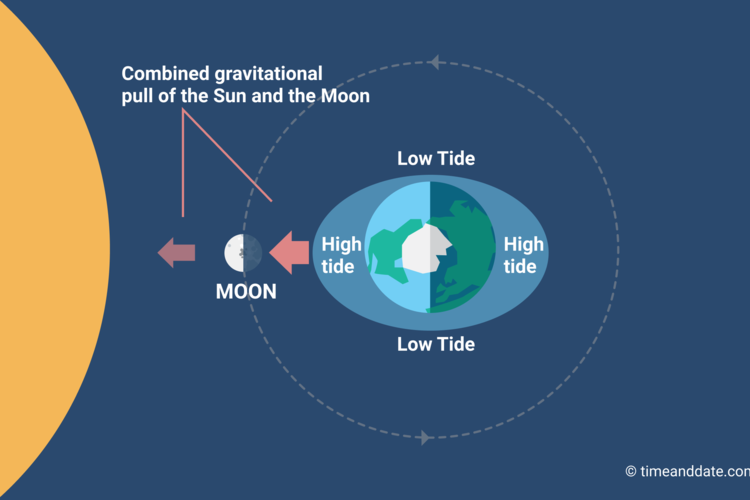High and low tides in the ocean are caused by the moon s gravity

High and Low Tides: The Influence of the Moon’s Gravity

The constant ebb and flow of the ocean’s tides have intrigued and fascinated humanity for centuries. We have marveled at the immense power and rhythmic nature of this natural phenomenon. Have you ever wondered what causes these tides? Surprisingly, the answer lies in the gravitational pull of the moon. Yes, the moon!
The moon’s gravitational force is powerful enough to affect the Earth and its bodies of water. It is this force that creates the gravitational pull responsible for the occurrence of tides in the ocean.
The moon exerts its gravitational pull on the Earth’s oceans, causing them to bulge outwards on the side facing the moon. Simultaneously, there is also a bulge on the opposite side of the Earth due to the centrifugal force caused by the rotation of the planet. These two bulges create what we commonly refer to as high tides.

As the Earth rotates, locations on its surface move towards and away from the moon. When an area moves towards the moon, it experiences high tide, whereas areas moving away from the moon experience low tide. This results in a consistent alternation between high and low tides throughout the day.
The gravitational force that the moon exerts creates a phenomenon known as gravitational attraction. This influence is not limited to the ocean alone; it extends to all bodies of water on Earth, including lakes and rivers. However, due to the vastness of the ocean, the impact of these tidal forces is most noticeable in coastal areas.
It’s important to note that the sun also plays a role in the occurrence of tides, albeit not as influential as the moon. The gravitational pull of the sun, when combined with that of the moon, enhances the intensity of tides during specific periods of the month. These are known as spring tides, and they occur during the full moon and new moon phases.
On the other hand, when the sun, moon, and Earth form a right angle, the gravitational forces partially cancel each other out, resulting in weaker tides. These are referred to as neap tides and occur during the first and last quarter moon phases.
In conclusion, the moon’s gravity is the primary force that drives the rhythmic rise and fall of tides in the ocean. The dance between the Earth, moon, and sun orchestrates these tidal movements. Understanding the influence of the moon’s gravity on tides brings us closer to unraveling the mysteries of our vast and dynamic planet.
Sources: Science4Fun: Tides
Related Posts
Quick Links
Legal Stuff

